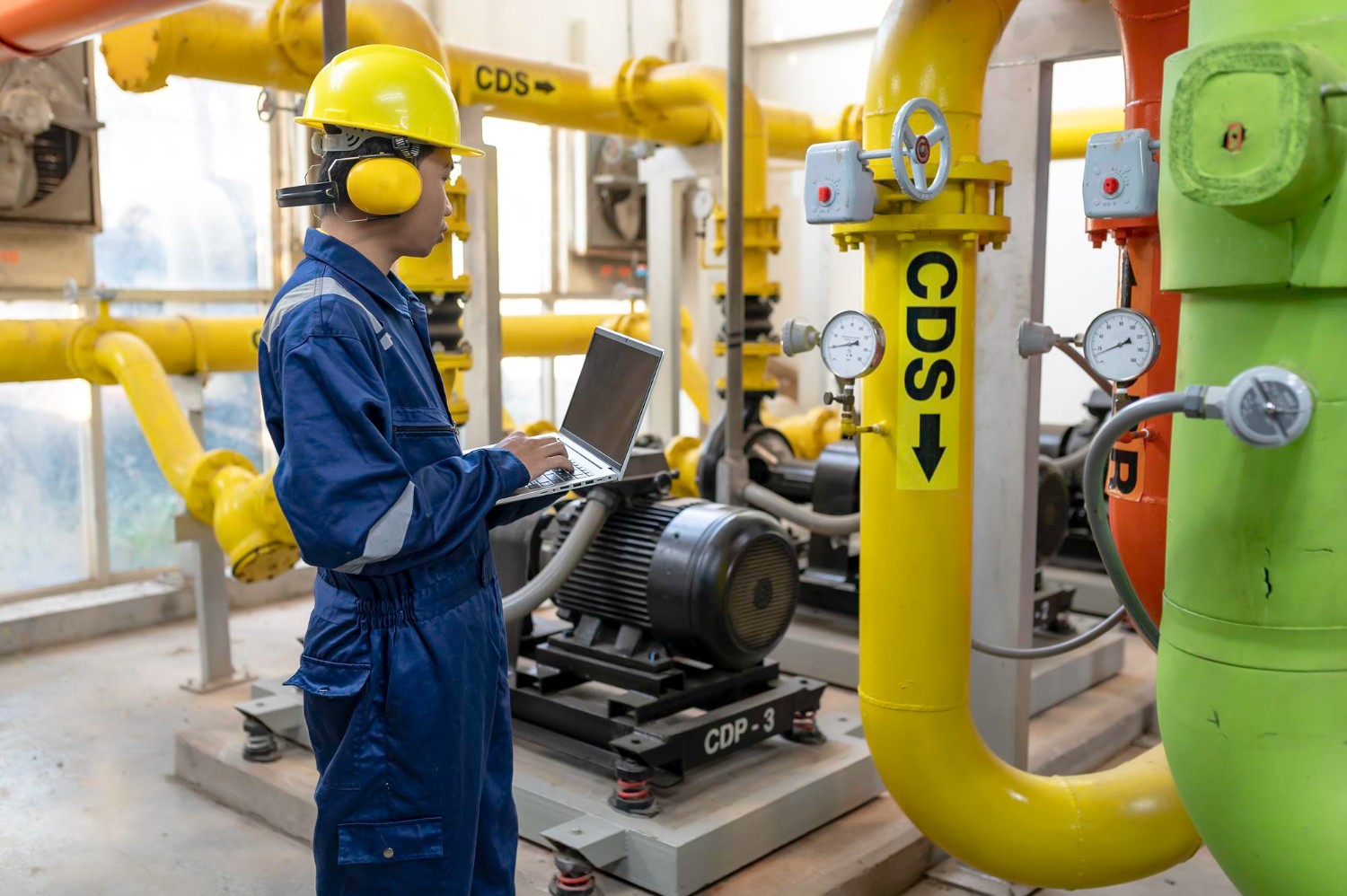Considering the many challenges organizations must face when dealing with asset management, it’s easy to underestimate the importance of a comprehensive leak detection and repair program. What these organizations must understand, however, is that failing to implement such a program exposes them to regulatory enforcement and financial penalties – especially if those organizations handle liquids or gases. More than fifty federal regulations require businesses to have a formal leak detection and repair program, or LDAR program, or mandate the use of an LDAR methodology. In the US, the Environmental Protection Agency (EPA) has oversight for compliance.
In this article, we discuss what LDAR means, the most common causes of leaks you should watch out for, and how to develop a rigorous LDAR program to combat these leaks.
What is Leak Detection And Repair?
To start, a leak is any time liquid, gas, or energy unexpectedly escapes from a system or equipment. Leak detection and repair (LDAR) is how maintenance teams find and fix those leaks.
Leak detection and repair (LDAR) is a process to identify and fix any type of leak in gas and oil pipelines, tanks, and other equipment. By implementing effective LDAR programs, organizations can prevent major accidents, stop the loss of resources, and save money by identifying and developing plans for assets that aren’t in top shape. LDAR programs also help organizations comply with regulations that dictate standards for health, safety, and the environment.
What Are Some Examples of a Leak?
Unfortunately, many different types of leaks could happen at any organization. They can be anything from air to gas to water leaks and can happen to equipment such as oil pipelines, storage tanks, and more. These leaks are harmful to asset health and can lead to excessive amounts of operational waste. Leaks are also potentially dangerous for both the environment and the people around them. As such, they should be found and addressed as soon as possible.
Some leaks to look out for include:
- Water leaks: These can occur in plumbing systems and can result from worn equipment, like hoses and pipes.
- Gas leaks: These are dangerous due to flammability. Common types of gas leaks include carbon monoxide and methane leaks, which are especially dangerous because they are hard for people to detect without the required equipment.
- Air leaks: Small holes can appear in hoses or other machinery due to age or wear and tear, which leads to these types of leaks.
- Electricity leaks: These commonly happen due to damaged machinery and can lead to excessive loss of power.
What Are the Benefits of LDAR?
There are a few reasons why implementing an LDAR program is beneficial, especially for those working with hazardous materials: safety, productivity, financial health, and compliance.
- Safety: Detecting and addressing leaks quickly keeps the environment, preventive maintenance team, and any person within the vicinity safe, especially if the leaks involve dangerous materials like chemicals or nuclear waste.
- Productivity: Finding and repairing leaks as soon as they happen makes it less likely that you must halt normal business processes to address a major accident or injury. In addition, asset conditions will be better across the board compared to if leaks were allowed to remain, allowing for less downtime and longer asset life cycles.
- Financial health: By implementing an LDAR program, you can extend the life of your assets, lose less money to wasted time and resources, and avoid hefty fines and fees for not complying with operational regulations.
- Compliance: LDAR programs ensure that your organization is complying with regulations put in place by the US Environmental Protection Agency (EPA).
How to Set up an LDAR Program
So now you know the benefits of implementing LDAR. But how, exactly, do you do so? There are a few steps involved, which are described below.
- Identifying components: Starting to incorporate LDAR within your organization begins with identifying assets and asset components. This involves labelling components with a QR code and/or an identification number.
- Defining leaks: Once assets and asset components are identified, the relevant personnel should identify, document, and communicate what defines a leak.
- Monitoring assets: Each asset should be monitored regularly to ensure that there are no leaks present. This should be set up as a regular schedule referred to as the monitoring interval.
- Repairing assets: Once leaks are found, they should be addressed and dealt with as soon as possible or within a set amount of time.
- Recordkeeping: Throughout the LDAR process, you should be recording all work and inspections that have been done or completed. This way, you can have a historical database that tells you information about how well the asset is doing as well as a basis for when you are evaluating the effectiveness of your overall process.
How Does a CMMS Assist with LDAR?
Using a CMMS is always a good idea for any organization that wants to keep track of the health of its assets. After all, keeping track of leaks is synonymous with making sure assets are in the best shape possible.
When using a CMMS such as NEXGEN, you can keep detailed records of every asset or component you want to track in a convenient, cloud-based service. This means all assets will have their records filled with historical data, such as any repairs and inspections done in their lifetimes, as well as identifying attributes such as an ID number and a QR code. This is useful for knowing exactly which asset is leaking and how frequently it’s doing so so you can take the appropriate course of action to remedy its issues.
In addition, you’ll be able to create and track service requests and work orders easily, which eases the burden of reporting and logging leaks and labor. When created and stored in the same CMMS, you can see who found the leak, requested that it be fixed, who fixed it, and who reviewed it all using the same software. And all this information is retroactively accessible when checking the asset’s historical record.
In short, because LDAR and asset management go hand-in-hand, there’s a plethora of things you can do with a CMMS that will help you find and repair leaks. And when you’re working with software that has both CMMS and EAM possibilities, like NEXGEN, the benefits are hard to ignore.
To learn more about how NEXGEN can help you with LDAR, click the button below to schedule a demo with us today.






